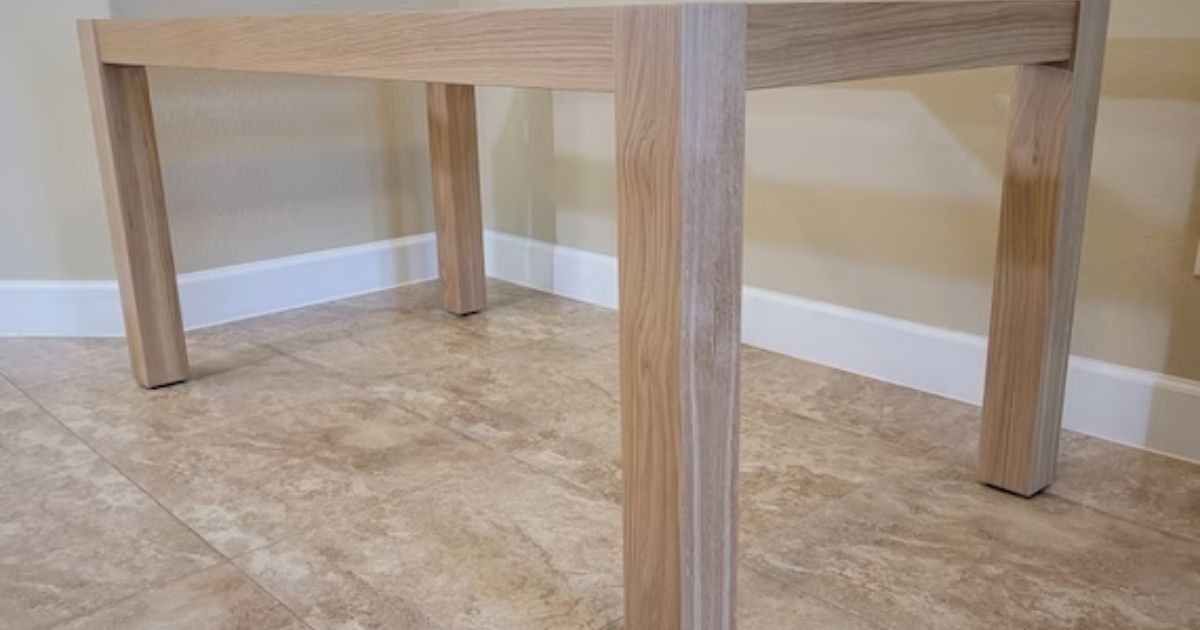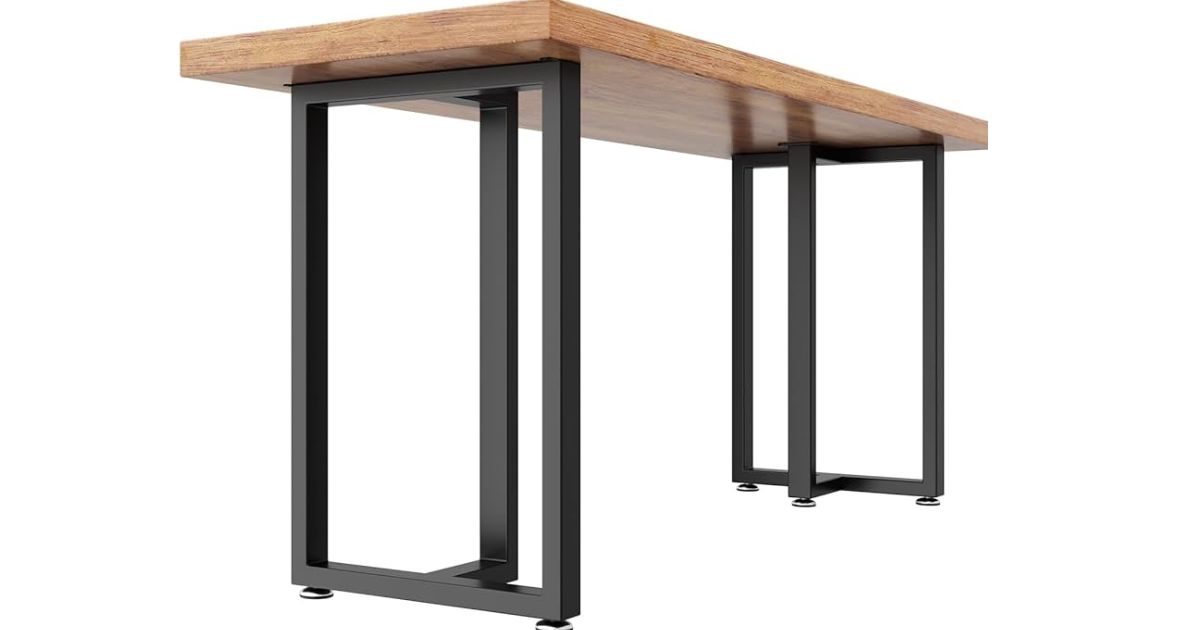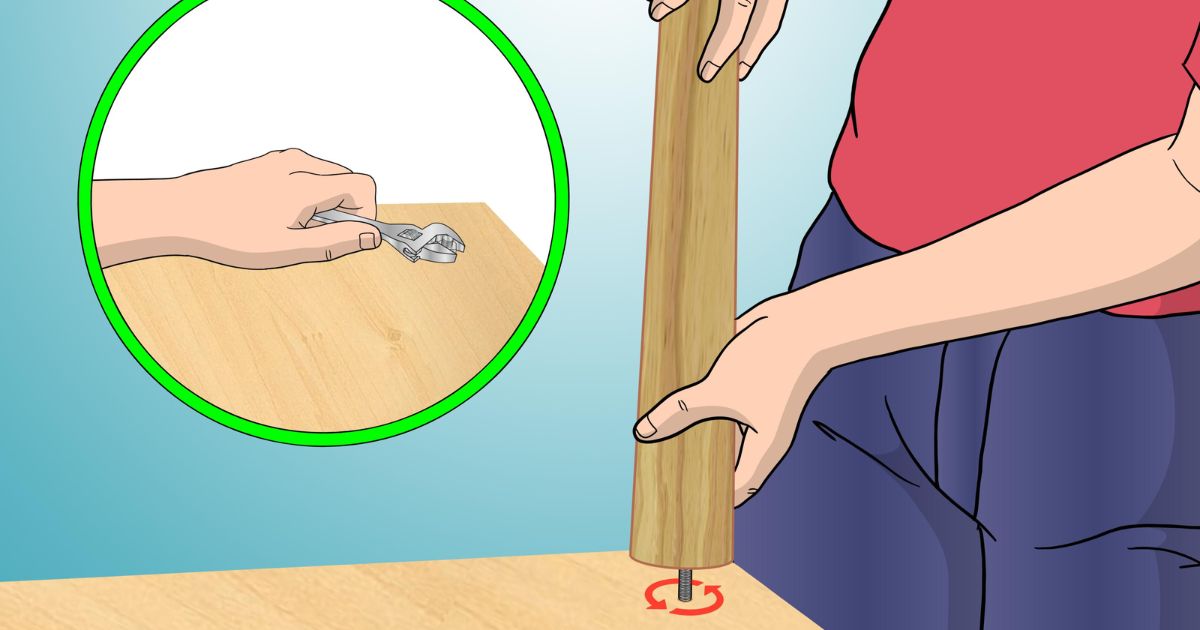Are you looking to add a touch of elegance and functionality to your coffee table? Look no further! In this detailed and practical guide, we will walk you through the step-by-step process of attaching legs to your coffee table. From choosing the right legs to drilling pilot holes and ensuring stability, we’ve got you covered. Join us as we dive into the world of coffee table leg attachment and elevate your living space to new heights of style and comfort.
Key Takeaways
- Consider the style, height, and material of the legs
- Choose legs that complement the overall aesthetic of your coffee table and living space
- Adjustable legs offer customization and flexibility in height and style
- Select a sturdy tabletop material that can withstand weight and daily use
Choosing the Right Legs for Your Coffee Table

When selecting legs for your coffee table, it is important to consider various factors such as style, height, and material. The style of the legs should complement the overall aesthetic of your coffee table and the rest of your living space. Whether you prefer sleek and modern, rustic and farmhouse, or traditional and elegant, there is a leg style to suit your taste.
Adjustable legs offer numerous benefits. They allow you to customize the height of your coffee table, making it suitable for various uses and seating arrangements. Adjustable legs also make it easier to level your table on uneven surfaces.
They provide flexibility in case you decide to change the height or style of your coffee table in the future. So, when choosing the right legs for your coffee table, consider both the style and the benefits of adjustable legs.
Gathering the Necessary Tools and Materials
Before you start attaching legs to your coffee table, it’s important to gather the necessary tools for assembly. Some essential tools you will need include a drill, screws, a screwdriver, and a measuring tape. Choosing the right materials for your coffee table, such as sturdy legs and a tabletop, is crucial for a successful and durable construction.
Essential Tools for Assembly
Throughout the process of assembling a coffee table and attaching its legs, it is imperative to have the essential tools and materials readily available. This will ensure a smooth and successful assembly, avoiding common mistakes and ensuring proper alignment and stability. Here are three essential tools for coffee table assembly:
- Screwdriver: A screwdriver, whether manual or electric, is necessary for driving screws into the tabletop and attaching the legs securely. Make sure to choose the appropriate screwdriver head that matches the screws provided with your coffee table.
- Measuring tape: Accurate measurements are vital for ensuring proper alignment and stability when attaching coffee table legs. Use a measuring tape to measure and mark the exact positions where the legs should be attached to maintain symmetry.
- Level: To avoid any wobbling or unevenness, use a level to ensure the coffee table is perfectly balanced. This will provide stability and prevent any accidents or spills.
Choosing the Right Materials
In order to successfully attach legs to a coffee table, it is essential to gather the necessary tools and materials, including the appropriate screws, a sturdy tabletop, and durable leg attachments. When choosing the right materials, it is important to consider the different types available and conduct a cost comparison. A coffee table top be should be both attractive and functional, ensuring it complements your overall design and provides a stable surface for your daily needs.
For the screws, opt for ones that are specifically designed for furniture assembly to ensure a secure attachment. As for the tabletop, select a sturdy material such as solid wood or plywood that can withstand the weight and daily use.
For the leg attachments, there are various options to choose from, including metal brackets or angled plates. Consider the durability, stability, and ease of installation when making your selection. By carefully choosing the right materials, you can ensure a long-lasting and reliable coffee table.
Preparing the Coffee Table for Leg Attachment

To ensure proper stability and alignment, the coffee table must undergo appropriate preparations prior to attaching the legs. Here are three essential steps to follow:
- Measure and mark: Begin by measuring and marking the exact positions where the legs will be attached. Use a measuring tape and a pencil to ensure accuracy. Consider the dimensions and design of the coffee table to determine the ideal placement for the legs.
- Drill pilot holes: Once the positions are marked, use a drill to create pilot holes at each marked spot. Pilot holes help prevent the wood from splitting and make it easier to attach the legs securely. Choose a drill bit that matches the size of the screws or bolts you will be using.
- Attach the legs: Finally, attach the legs to the coffee table using the screws or bolts. Make sure they are tightened securely to provide stability. Consider using alternative leg attachment methods, such as using brackets or metal plates, for added durability and strength.
Measuring and Marking the Leg Placement
Before proceeding with attaching the legs, you should personally measure and mark the exact placement on the coffee table to ensure accurate alignment and stability. This step is crucial for achieving a professional and sturdy finish. To accurately measure and mark the leg placement, you can use various techniques such as:
- Center-to-Center Method: Measure the distance from the center of one leg to the center of another leg on the same side. Repeat this measurement for the opposite side. Mark the positions on the table accordingly.
- Equal Distance Method: Measure and mark equal distances from each corner of the table to ensure the legs are evenly spaced. This method is especially useful for square or rectangular tables.
- Visual Alignment Method: Use your eye to visually align the legs with the corners or edges of the table. This method may require more precision and attention to detail.
By using these measuring techniques, you can ensure that your coffee table legs are properly aligned and provide stability to the overall structure. Remember, accurate measurements are essential for a successful leg attachment.
In addition to these measuring techniques, it’s worth mentioning that there are alternative leg attachment methods available. Some people prefer using screws or brackets to attach the legs, while others may consider using adhesive or dowels. These alternative methods can offer different levels of stability and ease of assembly. Choose the method that best suits your preferences and the design of your coffee table.
| Measuring Technique | Description | Suitable for |
|---|---|---|
| Center-to-Center Method | Measures the distance between the centers of legs | Tables with multiple legs |
| Equal Distance Method | Measures equal distances from each corner | Square or rectangular tables |
| Visual Alignment Method | Relies on visual alignment | Tables with unique designs or asymmetrical legs |
Drilling Pilot Holes for the Leg Screws
When attaching legs to a coffee table, drilling pilot holes for the leg screws is an important step to ensure stability and prevent splitting of the wood. Pilot holes help guide the screws and prevent them from veering off course. It is crucial to use the correct drill bit size for the pilot holes to match the size of the screws being used.
Importance of Pilot Holes
Although often overlooked, drilling pilot holes for the leg screws is crucial in ensuring a secure and stable attachment of the legs to the coffee table. Pre drilling pilot holes has several important benefits that cannot be ignored:
- Preventing wood splitting: Pilot holes help to guide the screws into the wood, reducing the risk of splitting the wood fibers and weakening the structure of the table. This is especially important when working with hardwood or fragile materials.
- Accurate screw placement: Pilot holes ensure that the screws are inserted at the exact desired location, preventing any misalignment or wobbling of the legs. This helps to maintain the overall stability and balance of the coffee table.
- Ease of assembly: By using a drill guide, you can ensure that the pilot holes are drilled at the correct angle and depth. This makes it easier to attach the legs to the table, saving you time and effort during the assembly process.
Correct Drill Bit Size
To ensure proper attachment of the legs to the coffee table, it is essential to use the correct drill bit size in drilling pilot holes for the leg screws. The drill bit selection plays a crucial role in this process. Choosing the right size of the drill bit ensures that the pilot holes are neither too small nor too large for the leg screws.
A drill bit that matches the diameter of the leg screws is recommended. This prevents the wood from splitting and provides a secure and sturdy connection between the legs and the coffee table.
When drilling the pilot holes, it is important to use proper drilling techniques. Apply gentle and consistent pressure while drilling to avoid damaging the wood. Take your time and ensure that the pilot holes are straight and centered for accurate leg attachment.
Attaching the Legs to the Coffee Table
Once the coffee table has been assembled, the next step is to securely attach the legs using the appropriate hardware and techniques. Here are three important steps to follow when attaching the legs to your coffee table:
- Choose the leg style: Depending on the aesthetic you want to achieve, you can choose from various leg styles such as tapered, turned, or hairpin legs. Consider the overall design of your coffee table and select legs that complement it.
- Different leg attachment methods: There are different ways to attach the legs to the coffee table, including using metal brackets, threaded inserts, or dowels. Research each method and determine which one will provide the best stability and durability for your specific table design.
- Secure the legs: Once you have chosen the leg style and attachment method, follow the manufacturer’s instructions or use proper woodworking techniques to securely attach the legs to the coffee table.
Testing the Stability of the Attached Legs

To ensure the stability of the Hairpin-Leg Coffee Table, it is essential to conduct a thorough examination of the attached legs by performing various stability tests. Testing methods play a crucial role in identifying potential stability concerns and ensuring that the coffee table remains steady and secure.
One common testing method is the stress test, where pressure is exerted on the table from different angles to assess its stability under different weight distributions. Another method is the wobble test, which involves applying force to the table in different directions to check for any instability or wobbling.
The shake test can be performed by shaking the table to determine if the legs are securely attached and if any loose parts are present. By using these testing methods, you can address stability concerns and ensure that the attached legs provide a strong and stable foundation for your coffee table.
Finishing Touches and Maintenance Tips
After attaching the legs to the coffee table, you can add the finishing touches and implement maintenance tips to ensure its long-lasting beauty and functionality. Here are some maintenance techniques and tips to protect the coffee table surface:
- Apply a protective finish: Use a clear polyurethane or varnish to seal the wood surface. This will protect it from spills, stains, and scratches.
- Use coasters and placemats: Encourage guests to use coasters for their drinks and placemats for hot dishes. This will prevent heat and moisture from damaging the table.
- Regular cleaning: Dust the table regularly with a soft cloth or microfiber duster. Avoid using abrasive cleaners or harsh chemicals that can strip the finish.
Frequently Asked Questions
What Type of Finish Should I Use on the Coffee Table After Attaching the Legs?
When it comes to finishing a coffee table, it is important to choose the right type of wood finish. There are various options available, each with its own benefits, such as providing a protective coating for the surface.
Can I Use Different Types of Legs for My Coffee Table?
When considering different leg materials for a coffee table, it’s important to weigh the pros and cons. Wood legs offer durability and a classic look, while metal legs provide a modern aesthetic. Ultimately, the choice depends on the desired style and functionality of the coffee table.
How Long Does It Typically Take to Attach Legs to a Coffee Table?
When attaching legs to a coffee table, it is important to choose the right size legs for proper stability. To securely attach the legs, follow these tips: use strong screws, pre-drill holes, and ensure the legs are aligned and level. The time taken will vary depending on the skill level and tools available.
Should I Pre-Drill Holes for the Leg Screws?
When attaching legs to a coffee table, there are pros and cons to pre-drilling holes for the leg screws. Pre-drilling can ensure a secure attachment, but it may weaken the wood. Alternatively, following these tips can help achieve a secure attachment without pre-drilling.
How Do I Fix Wobbly Legs on a Coffee Table After Attaching Them?
To ensure leg stability on a coffee table, it is crucial to address any wobbliness after attaching the legs. Various alternative solutions can be employed to fix this issue, such as adjusting the screws or using furniture levelers.
Conclusion
To successfully attach legs to your coffee table, it is essential to choose the right legs and gather the necessary tools and materials. Preparing the table, measuring and marking the leg placement, and drilling pilot holes are crucial steps in ensuring stability. Once the legs are securely attached, test the stability and make any necessary adjustments.
Finally, add finishing touches and follow maintenance tips to keep your coffee table looking great for years to come. Remember, with careful attention to detail, your coffee table will have sturdy and stylish legs that enhance its functionality and aesthetic appeal.








